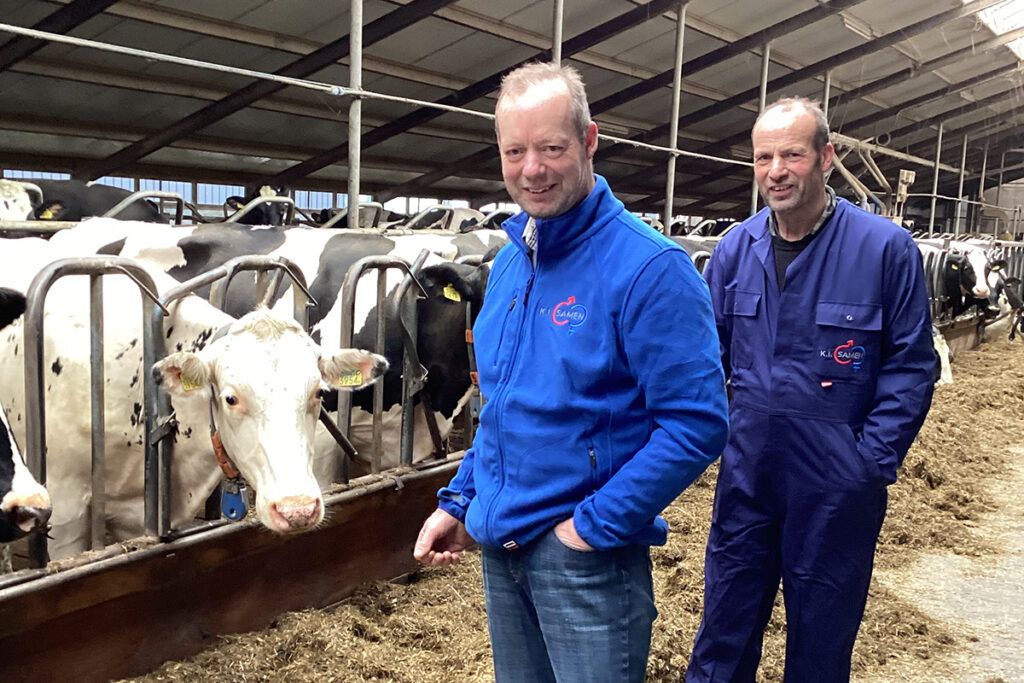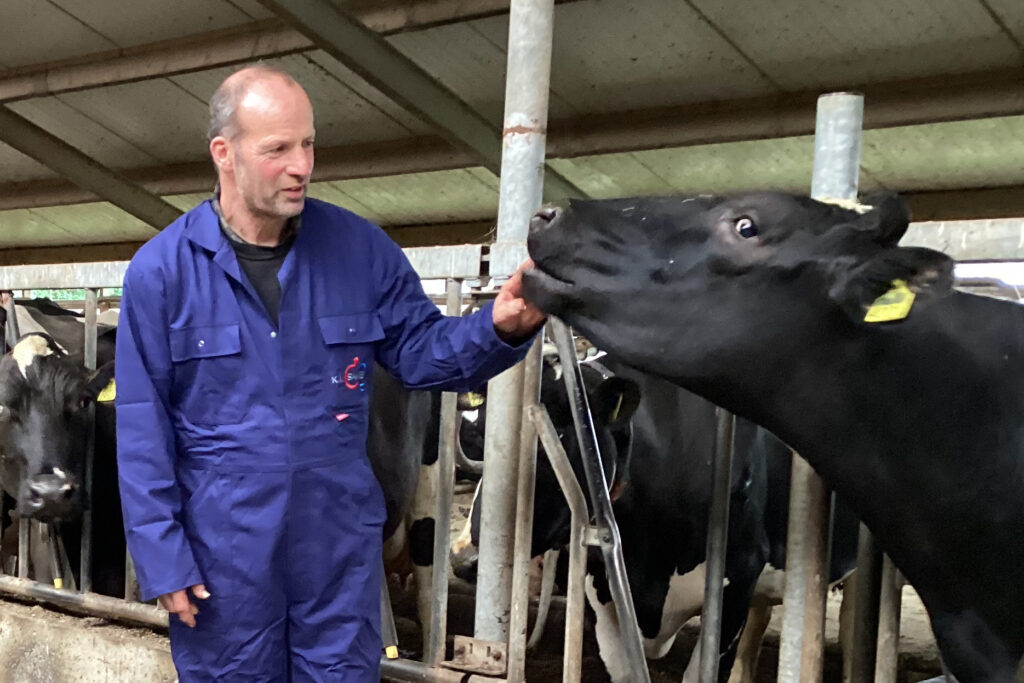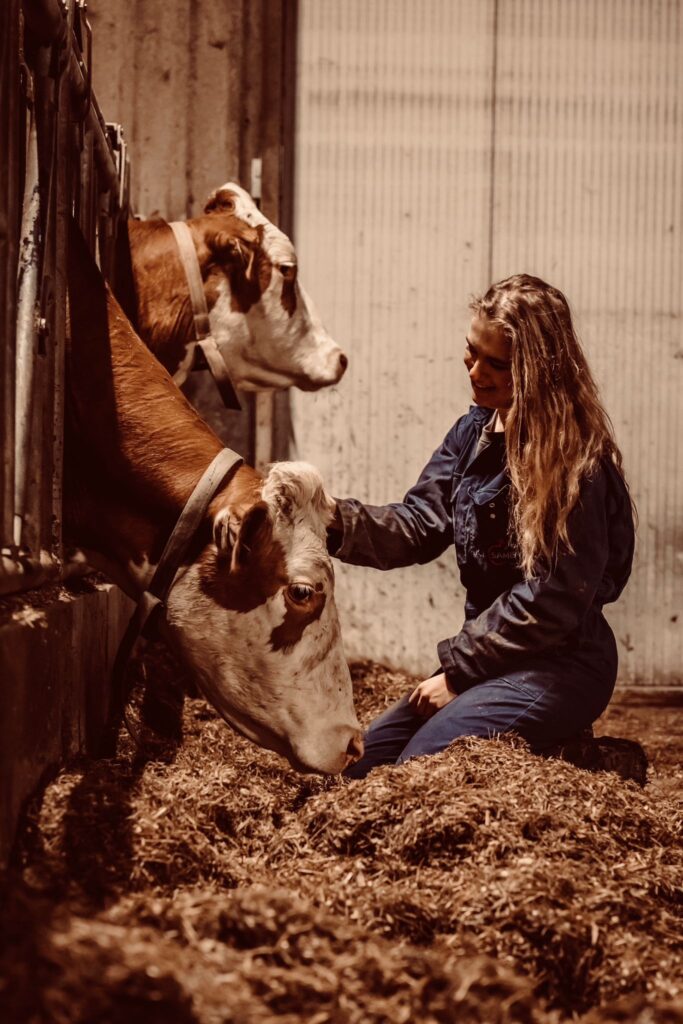Farm report: Pursuing their own breeding goals rewards Mts. Hoorn with healthy cows
Evert and Koop Hoorn are the proud owners of a flourishing dairy farm in Ruinerwold in the Dutch province of Drenthe. The brothers have 220 Holstein cows and 180 head of young stock. In the past year their herd achieved total milk production of more than 10,000 kg, with almost 4.5% fat and 3.5% protein. The average age of the cows in the herd is five years and two months. Their cows have remarkably good udder health, with a somatic cell count that averages 100 over the entire year.

Look for practical bulls
Evert and Koop have used bulls from K.I. Samen for more than 25 years. The Triple A system plays a key role in their selection strategy. Evert starts by saying “I don’t complicate matters. It’s all about making the right combinations. I look for a practical bull with the correct aAa code that suits the cow best. But we don’t just methodically apply the Triple A system.”
Practical proven breeding!
“Good scores for milking speed and the somatic cell count also play a decisive role in determining our choice of a bull”, continues Evert. The brothers are not particularly interested in the results of the index runs. Evert: “If we still use bulls from 20 years ago, it’s because they perform well. If a particular sire is a success for us, we’re quite likely to use the same bull three years later.” The brothers are not all that impressed by genomics. The results in practice are what really count. “And do you know the good thing about that?”, jokes Evert”, You don’t have to pay a premium for a straw! Genomically tested bulls are often more expensive, but that’s no guarantee that they produce a top cow.”
Paper versus Practice
Evert glances at the bull chart before continuing his story: “If I look at the scores on the index run, a lot of bulls don’t come up to scratch even though they perform really well in practice. So the scores don’t do justice to the bulls.” Evert names Grashoek Mareno as an example. “On paper some of Mareno’s breeding values may be a little disappointing, but the reality in practice paints a very different picture.” The first Mareno daughter has started lactation on their farm. She is a nicely balanced cow of average stature with perfect width and a good set of legs. “A slightly wider cow, just how I like to see them!” says Evert.
Malki leaves his mark on the herd
Evert is also a fan of Malki daughters. Big Malki is the most widely used sire from K.I.Samen on the Hoorn dairy farm and he has clearly left his mark in the herd. “The conformation traits dominate, but the Malki daughters are also good milk producers. They are strong, youthful heifers with good legs,” says Evert.

Good hygiene for healthy cows
When asked what they do to keep the herd healthy, Evert explains: “We make sure the cubicles look inviting and are very comfortable for the cows. Some of the cows use cow mattresses and others use deep litter cubicles. The cubicles are cleaned daily and sawdust and chalk are added to the bedding. We also dip the teats after milking to help maintain good udder health.”
Development from heifer to a well-built dairy cow
“Both of us highly value longevity. We breed well-built dairy cows that enjoy good health and live longer, so there is less need for replacement heifers”, continues Evert. Evert also considers late maturity important. “We let the heifers grow and develop gradually, even if the result is lower lactation values. A heifer must be able to grow into an adult cow and maintain a good body condition. We don’t expect huge milk production in their first record. It’s more about seeing consistent progress in later lactations. We allow our heifers time to develop their full potential. Cows should be able to grow older without any issues and develop over the lactations from a heifer into a mature cow with the potential to produce 100,000 kg of milk”, smiles Evert.
Low culling percentage
Problem-free cows that yield milk easily make the brothers’ daily work a pleasure. There is a low culling percentage on the farm with an average age at culling of seven years and impressive lifetime production of 51,000 kg for these cows.
Profile
Farm: Mts. Hoorn, Ruinerwold
Land: 112 hectares of grass and 28 hectares of maize
Herd: 220 dairy cows, 180 heads of young stock
Ave. production in 2023: 10,000 Kg milk | 4.41% fat | 3.49% protein

A PASSION FOR SUSTAINABLE BREEDING
Natasja Schenning, breeding consultant for the Drenthe region: “What I admire at the Hoorn brothers is the uniform, wide cows. Their consistent application of the Triple A system over the years has resulted in cows that radiate power and strength. The high level of milk production reflects their well-considered breeding strategy over the years. Their philosophy inspires me to champion sustainable breeding that focuses on the welfare of the cow and the farmer in this wonderful profession!”

